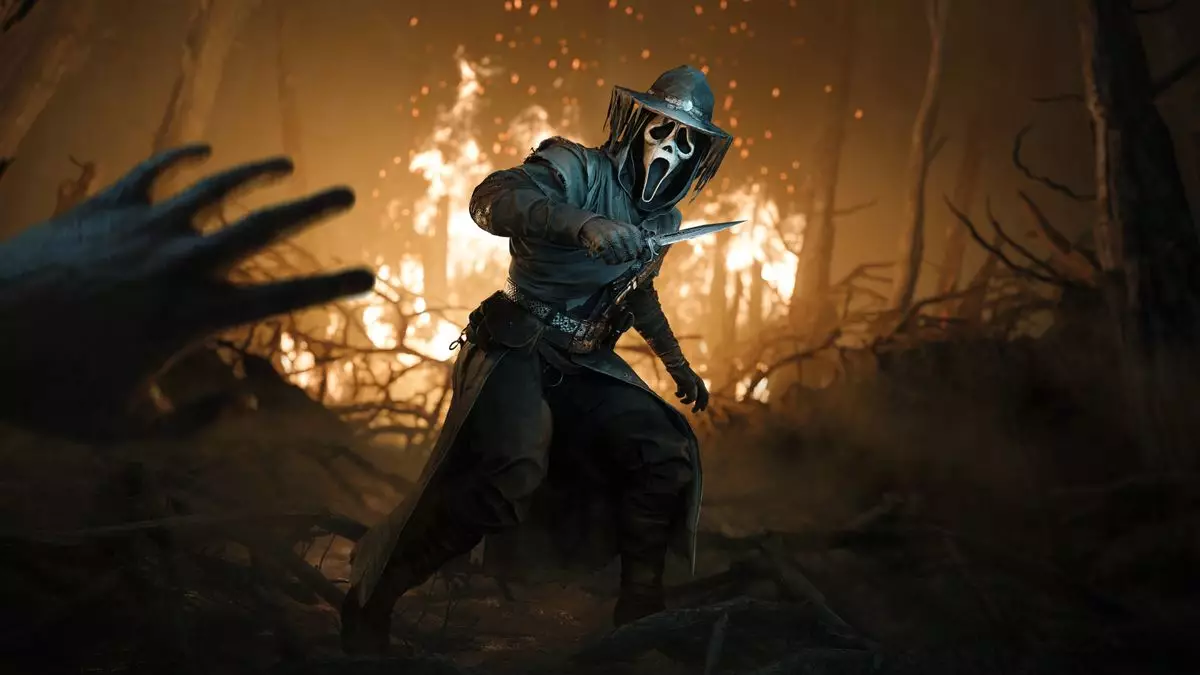In a bold move that raised eyebrows and ire alike, Crytek, the developer behind the multiplayer first-person shooter *Hunt: Showdown*, introduced a downloadable content pack (DLC) featuring a crossover with the iconic 1996 horror film *Scream*. The *Ghostface Rampage* DLC configures a mesh of two disparate entities—an alternate-history setting of 1890s Colorado and the slasher film’s sinister atmosphere rooted in the fictional town of Woodsboro, California. This unusual amalgamation has sparked considerable debate among the gaming community, leading many to question the implications of such collaborations on the game’s overall experience and narrative integrity.
Critics of the *Ghostface Rampage* DLC have been vocal, citing that integrating Ghostface into *Hunt: Showdown* feels jarring and could undermine the game’s unique lore. The principal concern stems from the incongruity of the character’s presence in a time and space which starkly contrasts with his origin story. Players are left wondering where the line is drawn as Crytek opens the floodgates for contemporary horror icons to clash with its historically grounded narrative. The community’s anxiety reflects a broader apprehension about how much creative liberty developers should take when meshing different intellectual properties (IPs).
In light of the backlash, Crytek released a lengthy statement clarifying its rationale for the crossover, which, while informative, felt somewhat evasive. The developer emphasized its commitment to maintaining the essence of established IPs while enriching the *Hunt: Showdown* universe with fresh narratives. Crytek articulated a vision of integrating new characters into the game—not as random appendages, but as vital components enhancing the immersive storytelling experience. However, many found this explanation to lean more on the defensive side, lacking concrete justifications for the creative choices made.
While Crytek’s intention to weave new narratives into its fabric is commendable, one must question whether the execution actually accomplishes this goal or rather serves to dilute the established lore. Is the supernatural atmosphere that Crytek claims to align with truly maintained when a character with such a disparate origin, like Ghostface, is introduced into the mix?
The crux of the controversy lies not solely within the fear of an attachment of external IPs but rather the delicate balance between immersion and entertainment within video games. Several players argue that surreal crossovers detract from the atmosphere that has been so painstakingly crafted, whereas others find joy in the ludicrousness and fun of creatively uniting disparate worlds. One cannot ignore that games have historically tread dangerous waters with their expansions; yet, there’s a nostalgia-bound comfort in the expectation of the universe’s coherence.
Proponents of fun-oriented gameplay might argue that games like *Hunt: Showdown* can afford a little whimsy. Similar debates have emerged within titles like *Dead by Daylight*, where the inclusion of actors like Nicolas Cage propelled a more playful ambiance, drawing in fans from beyond the horror gaming sphere. At the same time, newcomers hoping to dive into *Hunt: Showdown* could find themselves lost in the convoluted mix of narratives when welcomed by a slasher all-too-familiar.
As we reflect on the decisions that led Crytek to integrate Ghostface into *Hunt: Showdown*, it opens a wider discussion about player expectations in the gaming landscape filled with collaborative events. With *Ghostface Rampage*, Crytek seeks to test the limits of narrative blending; however, the question remains: how will the fanbase adjust to the evolving direction of the game?
While some may embrace these crossovers as thrilling and innovative, others may hold steadfast to the notion that maintaining an internal logic is essential for engagement. Only time will tell if this decision invigorates or alienates the community, but it undoubtedly serves as a significant case study on the nature of storytelling within video games, revealing the dichotomy between fan service, lore integrity, and the quest for innovative gameplay experiences.


Leave a Reply